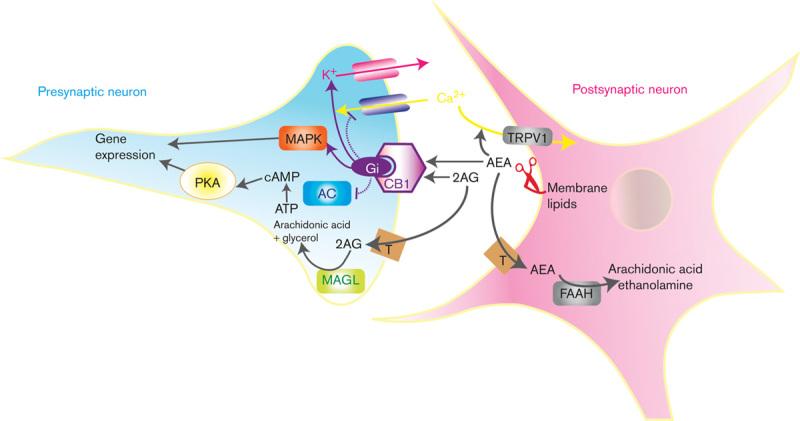Fig. 1.

A schema of the currently proposed model for endocannabinoid neurotransmission. Anandamide (AEA) and 2-arachidonoyl glycerol (2-AG) are synthesized and released from postsynaptic membranes to activate Gi-protein-coupled CB1 cannabinoid receptors. This interaction initiates a cascade of signal transduction mechanisms that include inhibition of adenylate cyclase (AC), activation of MAP kinase (MAPK), inhibition of calcium influx and facilitation of potassium efflux. AEA also activates transient receptor potential vanilloid type-1 (TRPV1) channels to facilitate calcium influx. The effects of AEA and 2-AG are terminated by internalization facilitated by a specific membrane transporter (T), followed by hydrolysis by fatty acid amide hydrolase (FAAH) and monoacylglycerol lipase (MAGL), respectively.
